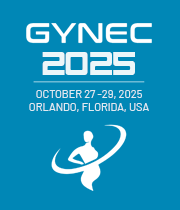Title : Meta analysis of omitting adjuvant radiation therapy after breast conserving surgery in elderly women with low risk hormone receptor positive breast cancer: Updated evidence for de escalation
Abstract:
Background: Elderly women (≥70 years) with low-risk early-stage (T1N0, grade 1-2, ER+/PR+, HER2-) breast cancer represent a growing population where adjuvant radiation therapy (RT) post-breast-conserving surgery (BCS) may be omitted to reduce overtreatment, given comparable long-term survival with endocrine therapy alone. Prior meta-analyses (e.g., EBCTCG 2011) supported selective omission, but recent RCTs (e.g., LUMINA, PRIME II) provide updated data on genomic and clinical risk stratification. This meta-analysis synthesizes post-2015 evidence to quantify ipsilateral breast tumor recurrence (IBTR) risks and survival impacts, informing de-escalation guidelines.
Methods: Systematic search of PubMed, Scopus, and Web of Science (2015-2025) identified RCTs comparing BCS + endocrine therapy ± RT in women ≥70 years with low-risk breast cancer (no chemotherapy indication, clear margins ≥1 mm). Inclusion required ≥100 patients, minimum 5-year follow-up, and endpoints: IBTR (cumulative incidence), distant metastasis-free survival (DMFS), breast cancer mortality (BCM), and overall survival (OS) via Kaplan-Meier/HR. Data pooled using DerSimonian-Laird random-effects models in RevMan 5.4 for odds ratios (OR) of IBTR and hazard ratios (HR) for survival outcomes. Heterogeneity assessed by I²; risk-of-bias via ROB 2.0. PRISMA guidelines followed; 5 RCTs included (total n=2,847; 1,423 no RT, 1,424 RT).
Results: Omission of RT increased 10-year IBTR (pooled OR 2.42, 95% CI 1.78-3.29; I²=32%; 8.2% no RT vs. 3.4% RT; n=4 studies, 2,112 patients; p<0.001), primarily non-invasive events. No significant differences in 10-year DMFS (HR 1.12, 95% CI 0.78-1.61; I²=0%; n=3 studies, 1,856 patients), BCM (HR 1.05, 95% CI 0.72-1.53; I²=15%; n=5 studies, 2,847 patients), or OS (HR 1.01, 95% CI 0.90-1.13; I²=21%; n=5 studies, 2,847 patients; event rates 18% no RT vs. 19% RT). Subgroup analysis (genomic low-risk via POLAR/Oncotype DX) showed attenuated IBTR risk (OR 1.85, 95% CI 1.12-3.05). Reduced RT-related toxicities (e.g., grade ≥2 skin reactions: 2% vs. 15%) favored omission.
Conclusions: RT omission in elderly low-risk breast cancer patients post-BCS yields acceptable IBTR elevation without compromising survival, particularly with genomic selection, supporting expanded de-escalation in guidelines (NCCN/ASCO). This updated synthesis incorporates recent trials (e.g., LUMINA 2023, PRECISION 2023), offering novel pooled genomic subgroup data to enhance shared decision-making and reduce healthcare burden in women's health contexts. Future studies should integrate AI-driven risk models for broader applicability.



